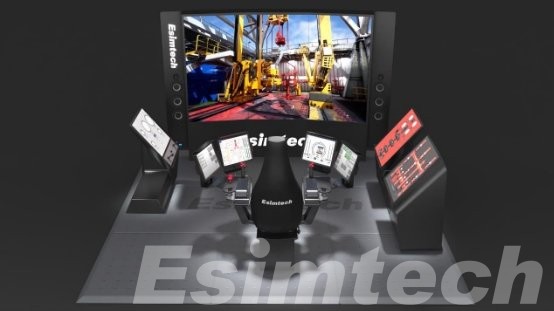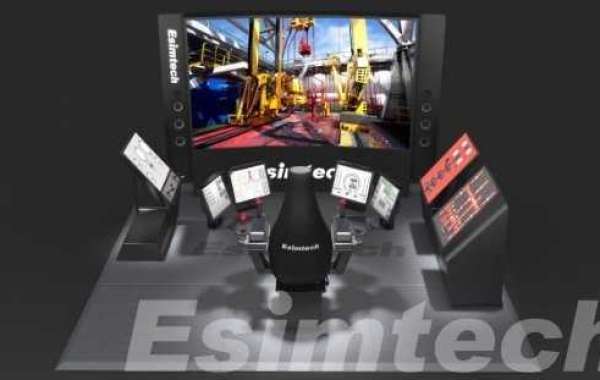the education of students and the promotion of their skill development are both included. Operators have access to a risk-free learning environment provided by drilling simulators, which enables them to hone their skills and put their newly acquired knowledge to use while mitigating any potential adverse effects. Because the simulator covers such a wide range of drilling operations, it gives operators the chance to study and gain experience with a wide variety of methods, procedures, and strategies that are utilized across the board. As a direct result of this, operators improve not only their ability to think strategically but also their skills in the operational side of things. This capability can be helpful to operators and engineers in learning about the risks and problems that are associated with a wide variety of drilling operations and becoming familiar with those risks and problems.
3. The improvement of the company's operational strategy through the development of new systems and proceduresDrilling simulators make it possible for engineers and operators to evaluate the impact that a variety of drilling options will have on drilling efficiency, safety, and cost by simulating a variety of decision-making and operation options. This allows for the evaluation of the impact that a variety of drilling options will have on drilling efficiency, safety, and cost. This makes it possible to optimize the operation strategy to its full potential, which in turn enables the opening of new possibilities. Because of this, operators are able to enhance the effectiveness and efficiency of their drilling operations. downhole operation simulators is possible to use a computer simulation to model the various drilling operation strategies that are available, which will allow one to accomplish this objective. Drilling simulators can be utilized to evaluate the functionality and viability of a wide variety of drilling tools, instruments, and equipment. These evaluations can be carried out in a number of different configurations. Evaluating the performance of the apparatus and finding ways to improve it are both necessary steps that need to be taken in order to accomplish this objective. Engineers can use the simulator to test a variety of different equipment combinations and make adjustments to the simulator's parameters in order to optimize the process and increase the drilling process's overall efficiency.

This can be accomplished by using the simulator.
5. The ability to perform data analysis in addition to providing assistance with decision-makingThe drilling simulator contains components that not only help to simplify data analysis but also provide support for the various stages of the decision-making process. Users will benefit from the enhancements that this functionality brings to drilling operations. Users will reap the benefits of the improvements to drilling operations that are brought about by this functionality. In addition to this, they allow for the performance of the apparatus to be evaluated and improved upon.
What exactly are the three distinct levels of control that can be applied to wells, and how come they can have these levels applied to them?
A rundown of the three different levels of control that can be exercised over the well is as follows:
Primary Well Control is a control state that is achieved when the bottomhole pressure is maintained at a level that is higher than the formation pressure, and oil and gas flow into the wellbore is stopped by making use of efficient drilling hydraulic control and wellhead pressure control. Primary Well Control is also a control state that is achieved when the bottomhole pressure is maintained at a level that is higher than the formation pressure. Primary Well Control is a control state that is achieved when the bottomhole pressure is maintained at a level that is higher than the formation pressure. This allows the bottomhole pressure to be maintained at a level that is higher than the formation pressure. This method of control can be referred to by a number of different names; however, the term "primary well control" is the one that is used the most frequently and is one of the many that are available. It is common practice to use techniques such as drilling fluid circulation, controlling the weight that is being supported by the bit, and maintaining pressure balance in order to achieve first-level well control. These techniques can be found in most drilling operations. The utilization of these processes is necessary in order to ensure that the pressure inside the wellbore is, at all times, maintained at the appropriate level.
The secondary well control takes over when the primary well control either fails or is unable to maintain the bottomhole pressure. When this control state is active, additional actions are carried out in order to either restore or keep the bottomhole pressure at its current level. As a means of describing this control state, the name Secondary Well Control has been given to the control state in question.
Tertiary Well Control (Tertiary Well Control) is a control state in which bottomhole pressure is restored by taking more powerful and urgent measures in serious cases where both primary and secondary well control fail. Tertiary Well Control is a control state in which bottomhole pressure is restored by taking more powerful and urgent measures. In the control state known as Tertiary Well Control, bottomhole pressure is brought back to normal by implementing measures that are both more forceful and more urgent. It is said that a control state has entered what is known as a tertiary well control when the bottomhole pressure has been restored as a result of taking actions that are both more powerful and more urgent. It is customarily required to initiate emergency response and emergency measures in order to put into effect three-level well control in the event of an emergency, such as a blowout or a failure in the well control system. It is possible that some of these will include things like the utilization of well control plugging agents, well control valves, explosion plugs, and various other devices that are functionally equivalent to one another.








